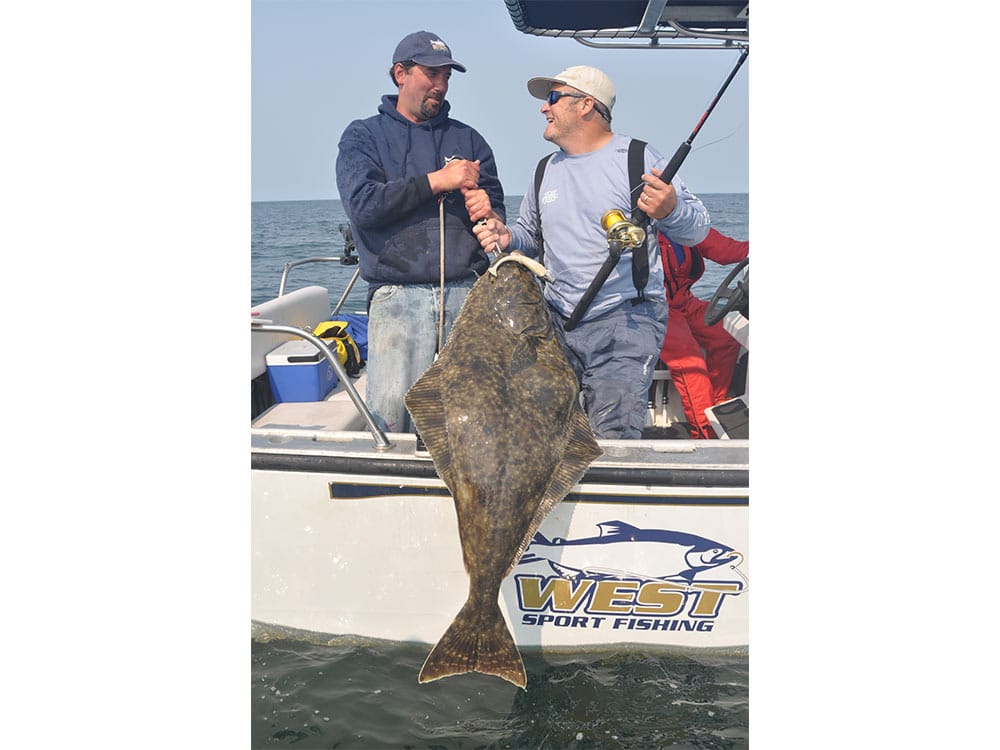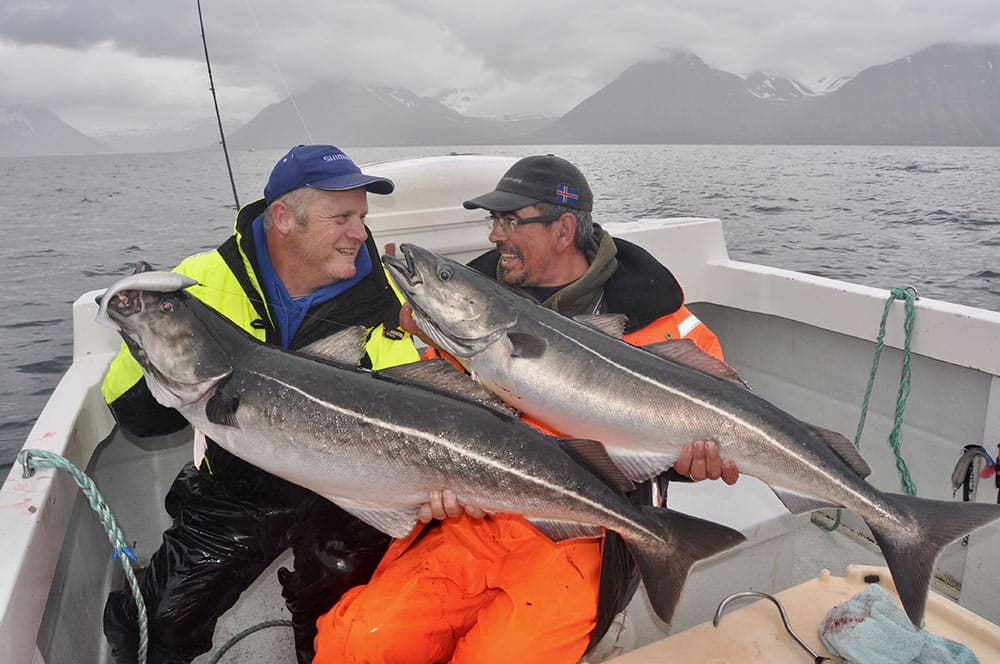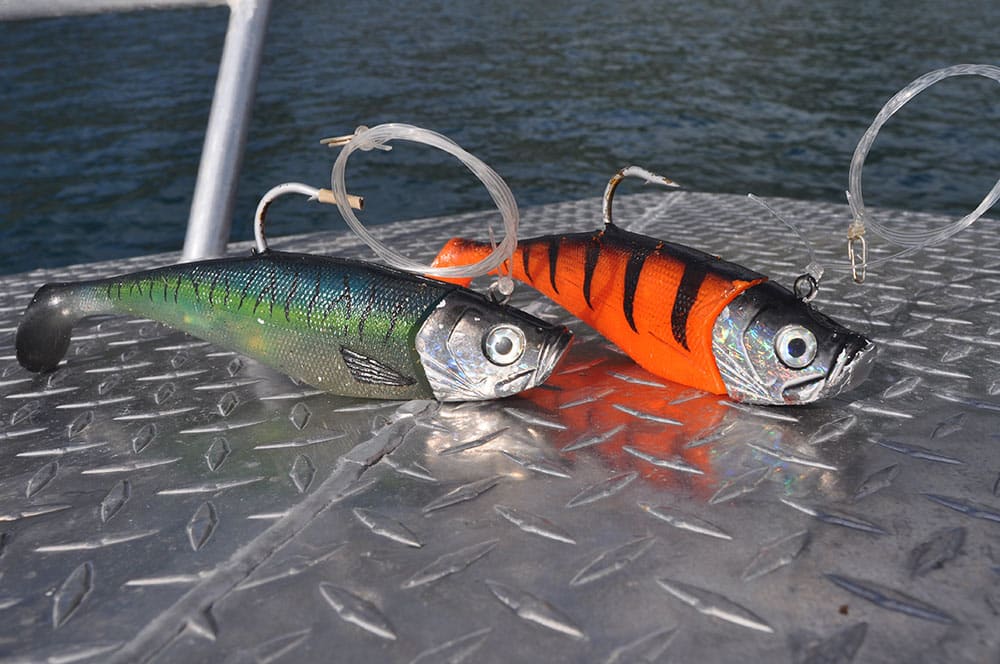
For many years when I fished at deep-water destinations outside of the tropics — such as in British Columbia, Iceland and Norway — I only used metal jigs in various shapes, sizes and colors for species like cod, halibut, lingcod and rockfish. However, I don’t think I’ve used a jig on my last dozen trips; instead I favor dropping weighted shads such as the Storm Wildeye Giant Jigging Shad and the smaller Storm Ultra Shads.
I find several advantages to using rubber shads versus metal jigs. When using the larger sizes, you catch bigger fish, as the small fish simply can’t fit the big lures in their mouths. Also, jigging often results in foul-hooked fish; with shads, almost every fish you catch will be cleanly hooked in the mouth. Finally, when fish bite a metal jig, they immediately realize it’s not real. When they grab a rubber shad, most remain interested for surprisingly long distances before finally eating the bait.
The larger jigging shads typically weigh in excess of 16 ounces, and they can measure 12 inches or more in length. Smaller weighted shads range from 6 to 8 inches long and weigh 4 to 6 ounces.
I fish heavier shads using a 20- to 30-pound-class boat rod matched with a Shimano Torium 16 or 20 high-speed reel, which makes cranking lures from deep water as easy as possible. I load the reel with 30- to 40-pound PowerPro, terminating in a 20-foot clear, monofilament shock leader of around 80-pound-test. I attach the lure to the end of the leader using a very strong snap swivel.

I fish smaller shads on medium-heavy-action spinning rods matched with a 5000-size reel such as the Shimano Saragosa, loaded with 20-pound PowerPro and terminating in a 12-foot leader of clear 30-pound mono.
In very deep-water scenarios, I don’t think the lure color makes a whole lot of difference. Rather, it’s how the lure is fished that determines whether the fish eats. When fish are feeding closer to the surface, however, use a lure that closely replicates the baitfish they’re eating in both color and perhaps most importantly size.
Fishing big shads is very straightforward. Start by dropping the lure all the way to the bottom, then bounce it around for a minute or so while slowly retrieving 12 to 20 feet. Then drop it back down to regain bottom contact and repeat the process. If nothing hits, start a steady retrieve up through the entire water column. This makes the lure’s rubber tail vibrate enticingly.
I fish smaller shads by casting them down current, in the direction of the boat’s drift. This allows the lighter lure to sink fast while the drifting boat catches up. When fishing smaller lures, some species, such as coalfish (pollack), respond best to a faster retrieve.

When fishing northern seas, fish can hit your lure at any stage of the retrieve, right up to the surface. Big pollack frequently feed right on the surface, while on numerous occasions I have clearly seen 30-pound-plus cod inhale a lure just below the boat, and even on one or two occasions, halibut have done that.
Work the entire water column to try and identify at which depth most fish are feeding. Concentrating only on fishing at or very near the bottom is perhaps the single biggest reason why some anglers struggle to catch anything. Color-coded braided lines are a big bonus when fish are holding at a specific depth, as once you have established the key depth, you can drop straight back down to the most productive zone.
Bites range from a solid slam that stops the lure dead in its tracks to a delicate pluck, as the fish pulls away at the lure’s tail. In either case, never strike. Keeping winding at exactly the same rate of retrieve. Any change in the lure’s speed or action almost always results in the fish losing interest. Keep winding until everything goes tight, then set the hook by firmly lifting the rod.
When I fished metal jigs, it was important to maintain as near a vertical line as possible, but when fishing shad, that’s not a real necessity. The design of the lures ensures they swim perfectly almost regardless of the line angle. The fact that most shads are rigged with a single up-facing hook means the chances of a lure snagging bottom, even if trailing many yards behind the boat, are minimal.
Rubber shads are, of course, equally effective when used in warmer water. But they simply don’t last long because so many species with razor sharp teeth make short work of soft plastic or rubber.








